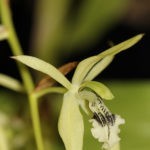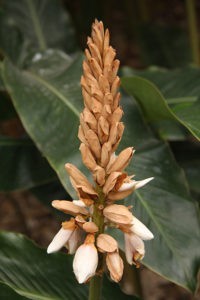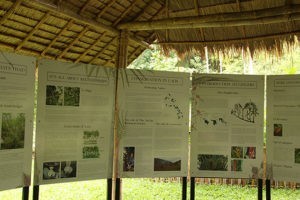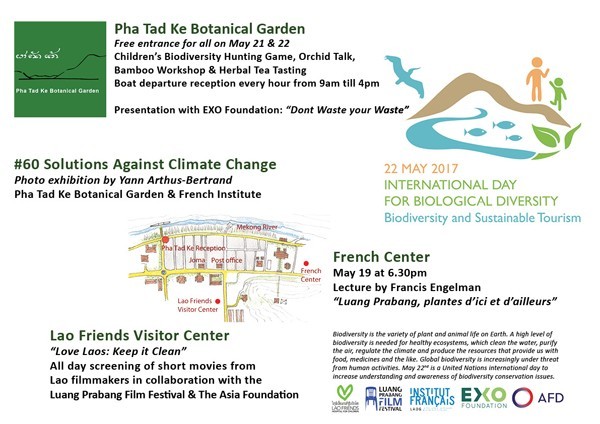Pha Tad Ke will hold its first event for the International Day for Biological Diversity from the 21st – 22nd May. The 22nd is the official UN recognised day for world biodiversity, but we’ve decided to extend our small celebration over two days to allow more people to join us.
For those of you who don’t know what this day is about, its purpose is to promote awareness and understanding of biodiversity around the world. By having it on the same date everywhere, every year, people are encouraged to get involved and do something to help conserve biodiversity.
What is biodiversity, and why should you care? Biodiversity is the variety of living organisms in the world or in a particular habitat/area. We want to maintain biodiversity and keep it high. There are a number of reasons for this.

Some of the biodiversity of Lao PDR on display in our Ginger Garden
Firstly, high biodiversity helps to protect an environment from change. The idea is that the more different species there are in an environment the more likely it is that there will be one (or more) that can live under new, changed conditions. So if the climate of an area becomes more wet and there is high biodiversity in that area some of the plants and animals may not be able to cope and may die out, but other species will be OK and will continue to survive. If the area is not biodiverse then perhaps none of the plants and animals living there can adapt to the new wetter conditions and they will all die. This will result in an area devoid of life. This seems to be an extreme example and somewhat far-fetched, but this is the reality we are facing if biodiversity is not maintained. The changing climate makes this situation more likely.

Coelogyne brachyptera, one of the 485 species of orchids currently known in Lao PDR
Preserving biodiversity allows for the maintenance of a healthy ecosystem. An ecosystem is just that, a ‘system’ and everything is connected and relies on something else. If some species are lost then the whole ecosystem will be altered. There are currently countless different kinds of environments and ecosystems around the world. As more species become extinct and are lost from these environments they will start to become more similar to each other. From a purely selfish point of view, ensuring the survival of a variety of ecosystems and species is important for the survival of humans. This variation provides us with the different foods, construction materials, medicines and the like that we need to survive.

Alpinia tonkinensis, a member of the Ginger family – another highly diverse group.
I believe that there is also an argument for preserving biodiversity for its own sake. Not everything has to be about people after all. Considering almost all of the threats to biodiversity are thanks to humans I think we need to take responsibility and clean up after ourselves, making a better situation for the other organisms that share this planet with us.

We have information about biodiversity and conservation available for visitors to the garden.
So, if you’re in Luang Prabang on the 21st or 22nd May be sure to join us. We will have a part of a photography exhibition called 60 Solutions at the gardens about tackling world biodiversity and conservation issues, and we are partnering with the Institut Francais, Lao Friends Children’s Hospital, the Luang Prabang Film Festival and The Asia Foundation for this event.
Entrance to the gardens is FREE for these two days. You can find details of our boat timetable (also free) on the ‘Visit Us’ section of our website. There is also information on our Facebook page about the event, as well as in the picture below.

Programme of events for the International Day for Biological Diversity.
If you’re not in Luang Prabang then please get involved in your local event, or just take some time to learn a bit more about biodiversity on your own, and give some thought to what you can do to look after it for the future.
By Bryony Smart, PTK Botanist



